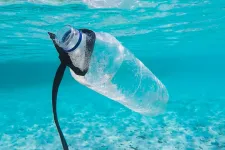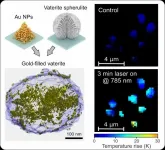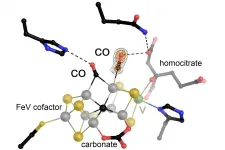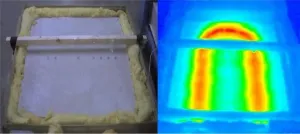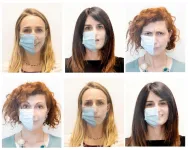(Press-News.org) Paris, France and New York, NY June 10, 2021 - AP-HP Greater Paris University Hospitals, the leading European clinical trial center with the largest amount of healthcare data in France dedicated to research and Owkin, a startup pioneering Federated Learning and AI technologies for medical research and clinical development, announced the recent results of their ongoing strategic collaboration at ASCO 2021. The abstract and poster entitled "Identification of pancreatic adenocarcinoma molecular subtypes on histology slides using deep learning models" demonstrates the first AI-based
tool for predicting genomic subtypes of pancreatic cancer (PDAC) developed from machine learning applied to histology slides. The tool, a trained and validated AI model, is usable in clinical practice worldwide and opens the possibility of patient molecular stratification in routine care and for clinical
trials.
Gilles Wainrib, Chief Scientific Officer and Co-Founder of Owkin said:
"Our research shows AI can help connect information at the genomic, cellular and tissue levels, and how doing so can bring immediate value to make precision medicine a reality for patients. This study further underscores the value of using machine learning for identifying histo-genomic signals for cancer research and clinical development."
Pancreatic adenocarcinoma is a complex and heterogeneous disease. Improvement of prognosis has stalled while pancreatic cancer is predicted to become the second most lethal cancer by the year 2030. Heterogeneity and tumor plasticity are likely major factors in the failure of many clinical
trials. Multiomics studies have revealed two main tumor transcriptomic subtypes, Basal-like and Classical that have been proposed to be predictive of patient response to first line chemotherapy. The determination of these subtypes has been possible so far by RNA sequencing, a costly and
complex technique that is not yet feasible in a clinical routine setting. Taken together, these factors make it compelling to use advanced AI methods with common histological slides, trained alongside crucial context from expert researchers, to address the unmet needs of patients.
Pr Jérôme Cros, Pathologist at Beaujon Hospital - Université de Paris said:
"This tool was developed using the unique histological and molecular resources from four APHP
hospitals (Amboise Paré-Beaujon-Pitié Salpétrière-Saint Antoine) though a unique collaboration
between pathologists from APHP, bioinformaticians from the group Carte d'Identité des Tumeurs
de la Ligue Contre le Cancer and data scientists from Owkin. It can remotely subtype tumor in minutes paving the way for many applications from basic science (study of intra-tumor heterogeneity) to clinical practice (tumor subtyping in clinical trials)."
This research is born out of a successful and ongoing collaboration between Owkin's multidisciplinary teams and those of the AP-HP Greater Paris University Hospitals. Since 2019, the two have collaborated in the service of shared objectives: 1) to improve patient care and facilitate the development of new drugs in three main areas (oncology, immunology, cardiology), 2) to democratize access to AI for researchers in order to promote innovation and medical advances.
ASCO 2021 Science Yielded from an Ongoing Fruitful Research Collaboration
This most recent scientific achievement comes on the heels of several other publications. Recently, in January 2021, AP-HP Greater Paris University Hospitals and Owkin published an AI-Severity score for Covid-19 patients using CT scans alongside other data modalities in Nature Communications.
This project, the collaborative output of a consortium also including INRIA/CentraleSupélec and Gustave Roussy, was achieved in record time due to the close coordination and established framework agreement between AP-HP Greater Paris University Hospitals and Owkin. The result: the AI Severity score has been shown to outperform other scores currently in use and demonstrates that effective collaborations such as these can quickly derive research findings with direct clinical utility.
In August of 2020, Owkin published its novel predictive AI tool for RNA-seq expression from whole slide images (HE2RNA) in Nature Communications-- one of the top 50 most widely read papers of 2020 in said journal. These findings were born out of close collaboration with Prof. Julien Calderaro (anatomo-cyto-pathologist at Henri-Mondor hospital, AP-HP). This tool can be deployed to all types of cancer and laid the groundwork for the histo-transcriptomic findings of the recent Pancreatic Adenocarcinoma tool.
Other notable research from this collaboration includes a paper on AI prediction of survival for patients with hepatocellular carcinoma published with Prof. Julien Calderaro in Hepatology in February 2020 and a comparison of classification methods of Crohn"s disease with machine learning models,published in July 2019, led by Prof. Jean-Pierre Hugot (pediatrician at Robert Debré hospital, APHP).
INFORMATION:
About Owkin:
Owkin is a French-American startup that specializes in AI and Federated Learning for medical research. Its multidisciplinary team of 100 people has expertise in analyzing real-world data and leveraging advanced machine learning technologies on multimodal cohorts. It was co-founded in 2016 by
Dr. Thomas Clozel M.D., a clinical research doctor and former assistant professor in clinical hematology, and Dr. Gilles Wainrib, Ph.D., a pioneer in the field of artificial intelligence in biology.
Owkin leverages life science and machine learning expertise to make drug development and clinical trial design both more targeted and more cost-effective. Owkin applies its cutting-edge machine learning algorithms across a broad network of academic medical centers, creating dynamic models that can not only predict disease evolution and treatment outcomes, but also be used in clinical trials
for enhanced analysis, high-value subgroup identification, identification of novel biomarkers, and thecreation of both synthetic control arms and surrogate endpoints. The end result? Better treatments for patients, developed faster, and at a lower cost.
To train its models, Owkin collaborates with top-tier hospitals to develop a real-world data access network. This network represents the first-ever at-scale and on-site solution for federated machine learning in the healthcare industry. Through this network, Owkin can interrogate heterogeneous realworld data hand-in-hand with world-class clinicians to interpret model features and discover and validate novel multimodal biomarkers, all the while preserving patient privacy. For more information, please visit http://www.owkin.com, follow @OWKINscience on Twitter, or contact Talia Lliteras at talia.lliteras@owkin.com .
About AP-HP Greater Paris University Hospitals:
The leading hospital and university center (CHU) in Europe, the AP-HP and its 39 hospitals are organized into six university hospital groups (AP-HP. Center - University of Paris; AP-HP. Sorbonne University; AP-HP North - University of Paris; AP-HP. Paris Saclay University; AP-HP. Henri Mondor
and AP-HP University Hospitals. Paris Seine-Saint-Denis University Hospitals) and are organized around five universities in the Ile-de-France region. Closely linked to major research organizations, the AP-HP has three world-class hospital-university institutes (Institut du Cerveau, ICAN, IMAGINE) and the largest French health data warehouse (EDS). A major player in applied research and innovation in health, AP-HP holds a portfolio of 650 active patents, its clinician-researchers sign nearly 9,000 scientific publications each year and more than 4,000 research projects are currently under development, all promoters combined. In 2020, AP-HP obtained the Institut Carnot label, which rewards the quality of research partnership: Carnot @ AP -HP offers industrial players solutions in applied and clinical research in the health sector. The AP-HP also created in 2015 the AP-HP Foundation for Research to support biomedical and health research carried out in all of its hospitals. http://
http://www.aphp.fr
ROCKVILLE, Md. - June 10, 2021 - The Association for Molecular Pathology (AMP), the premier global, molecular diagnostic professional society, today published consensus recommendations to aid in the design and validation of clinical CYP2D6 assays, promote standardization of testing across different laboratories and improve patient care. The manuscript, "Recommendations for Clinical CYP2D6 Genotyping Allele Selection: A Joint Consensus Recommendation of the Association for Molecular Pathology, College of American Pathologists, Dutch Pharmacogenetics Working Group of the Royal Dutch Pharmacists Association, and European Society for Pharmacogenomics and Personalized Therapy," was released online ahead of publication in The Journal ...
Champaign, IL, June 10, 2021 - Present in blood, urine, and milk, the chemical compound urea is the primary form of nitrogen excretion in mammals. Testing for urea levels in dairy cows helps scientists and farmers understand how effectively nitrogen from feed is used in cows' bodies, with important economic implications for farmers in terms of feed costs, physiological effects for cows such as reproductive performance, and environmental impacts from excretion of nitrogen in dairy cow waste. Thus, accuracy in testing dairy cow urea levels is essential.
Since the 1990s, mid-infrared testing of milk urea nitrogen (MUN) has been the most efficient and least invasive way to measure nitrogen use by dairy cows in large numbers. In a recent ...
Plastic bottles drifting in the sea; bags in the stomachs of turtles; Covid-19 masks dancing in the surf: few images are as unpleasant to look at as those that show the contamination of our oceans. And few environmental issues are as urgent and as present in the public awareness. "Most people have an emotional connection to the sea. They think of ocean pollution as an attack on a place they long for," said Nikoleta Bellou, marine scientist at Hereon's Institute of Coastal System - Analysis and Modeling. Between 1990 and 2015 alone, an estimated 100 million metric tons of mostly plastic waste entered the oceans. For that instance the study fits to the UN Decade of Ocean Science for Sustainable Development, which started this year to emphasize a sustainable use of ...
(Boston)--Medical education aspires to mitigate bias in future professionals by providing a robust curriculum that includes perspectives and practices for caring for sexual and gender minority (SGM) populations, including lesbian, gay, bisexual, transgender and intersex (LGBTQI) persons. To provide medical schools with a more systematic, uniform approach to teaching these topics in their curriculum, the Association of American Medical Colleges (AAMC) in 2014 published 30 SGM competencies and topics that curricula should address. However, implementation of these ideals remains challenging.
Building off the AAMC's comprehensive ...
Breakthrough in metamaterials: for the first time in the world, researchers at Tel Aviv University developed an innovative nanotechnology that transforms a transparent calcite nanoparticle into a sparkling gold-like particle. In other words, they turned the transparent particle into a particle that is visible despite its very small dimensions. According to the researchers the new material can serve as a platform for innovative cancer treatments.
In a new paper published in Advanced Materials, an international team of scientists, coordinated by Dr. Roman Noskov and Dr. Pavel Ginzburg from the Iby and Aladar Fleischman Faculty of Engineering at Tel Aviv University, Prof. Dmitry Gorin from the Center ...
Through the biological fixation of the element nitrogen by the enzyme nitrogenase, organisms gain access to molecular nitrogen (N2) in the Earth's atmosphere, which is essential for building cellular structures. In addition, a vanadium-dependent variant of nitrogenase can reduce the toxic gas carbon monoxide (CO) to hydrocarbons. These reductions of N2 and CO are among the most important processes in industrial chemistry, as they are used to produce both fertilizers and synthetic fuels. However, researchers have not yet been able to decipher the different pathways of the two reactions. Dr. Michael Rohde from Prof. Dr. Oliver Einsle's team at the Institute of Biochemistry at the ...
The consumption of raw materials has increased notably in industry in general, and in the construction industry in particular, amidst growing concerns over sustainability issues. Concrete and mortar are the most commonly used materials in construction, and many studies are currently under way to try and reduce the harmful effects of their manufacture. Concrete and mortar are made by mixing water, sand, cement and aggregates.
"The main problem is the amount of cement used to produce this type of material; cement manufacturing uses a huge amount of energy and natural resources, which implies a high level of CO2 emissions. Diverse studies are under way aimed at reducing the quantity of cement required. We are working to replace cement and aggregates ...
MINNEAPOLIS/ST.PAUL (06/10/2021) -- New findings from the University of Minnesota Medical School are helping uncover why some people are more likely to be overweight and develop Type 2 diabetes -- and it starts in the womb.
Previous association studies have shown that low birthweight among infants is a strong determinant for eventual obesity and Type 2 diabetes. The placenta of infants with a low birthweight have reduced levels of mTOR (mechanistic target of rapamycin), and the placenta of bigger infants have increased levels of mTOR. Building off of that research, a U of M Medical ...
Genova (Italy) 10 June, 2021 - The U-Vip (Unit for Visually Impaired People) research team led by Monica Gori at the IIT- Istituto Italiano di Tecnologia (Italian Institute of Technology) has recently published a study which shows for the first time how children aged from 3 to 5 years old have problems in recognising the emotions of people wearing surgical masks. This collateral effect of the preventive measures linked to the Covid-19 health emergency could influence the correct development of children's capabilities of social interaction. The research paper has been published in Frontiers in Psychology.
The use of facemasks for children ...
Actively restoring oyster reefs--beyond simply protecting them from harvest--can create big payoffs for habitat quality and the other species that flock to them. A new study from the Smithsonian Environmental Research Center (SERC), published June 3 in the journal Marine Ecology Progress Series, compared restored, protected and harvested areas using photos and video footage from roughly 200 sites.
Roughly a quarter of Maryland's oyster habitat lies protected in oyster sanctuaries. But only a small fraction of those sanctuaries have undergone full-scale restorations, with reconstructed reefs and new live oyster plantings. ...
